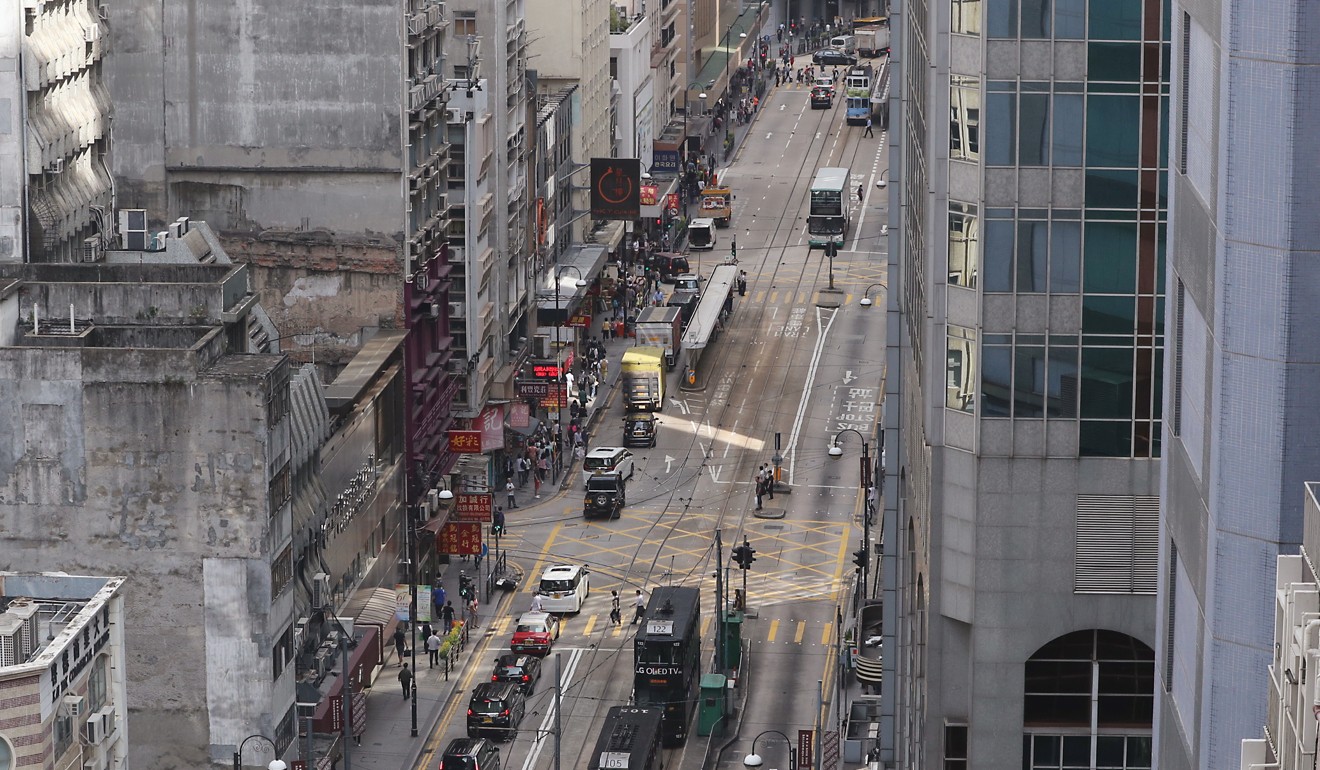
Most Hong Kong businesses along Des Voeux Road Central strip support pedestrian zone despite fears of Mong Kok madness, survey finds
- Walk DVRC’s ‘Sheung Wan Fiesta’ idea for 100-metre stretch part of wider push to free up 1.4km strip to promote heritage and culture
- NGO assures concerned parties measures to control activities and security will be in place to avoid busking chaos formerly seen in Mong Kok
Walk DVRC has proposed a trial to turn a 100-metre stretch between Morrison and Hillier streets into a car-free zone from 10am to 10pm daily – dubbed the Sheung Wan Fiesta – between next April and June.

Success of the plan hinges on approval from the Transport Department and police – with an impact assessment still under way – and ultimately a nod from the district council.

“The objective is to promote a walkable, inclusive and culturally vibrant Hong Kong,” said Markus Shaw, chairman of Walk DVRC and formerly the head of conservation group WWF-Hong Kong.
“Streets are chasms now and a vast majority of public space is taken up by roads. We want a fairer sharing of space.”
Pedestrian zone proves tough sell to shopkeepers in Hong Kong business district
The fiesta will have local culture and heritage at its heart through food and performances while promoting historic sights. Snack and craft beer stands alongside street shows will be fixtures on weekends, as well as outdoor seating, greenery and walking tours.
My biggest worry is that with uncontrolled freedom of activity, it could become another Mong Kok
The event is one of several projects the group has been pushing as part of a year-long campaign to turn a 1.4km stretch from Pedder Street to Western Market into a pedestrian and tram-only precinct.
But concerns lingered over traffic congestion, accessibility, logistics and noise from illegal street performers. “I am afraid it will become another Mong Kok,” one restaurant owner told interviewers.
After nearly two decades, the weekend pedestrian zone along Mong Kok’s Sai Yeung Choi Street South was closed and reopened to traffic in July amid complaints from residents and shopkeepers over noise pollution.
Should Hong Kong be more walkable? Environmentalists and tour groups explain
Shaw said measures would be implemented to manage and control such problems, including rules on permissible activities, as well as the commissioning of a security company for street management.
“We are absolutely determined not to repeat the mistakes of Mong Kok,” he said.
We are absolutely determined not to repeat the mistakes of Mong Kok
Central and Western district councillor Kam Nai-wai said he was supportive of the plan in principle but would like to see measures produced by the group.
“A 90-day trial is fine because it doesn’t affect too many residents and road traffic flow is relatively low,” he said.
“My biggest worry is that with uncontrolled freedom of activity, it could become another Mong Kok and this will give a bad first impression, deterring further support.”
He urged the group to consult the council earlier to allow more deliberation.
Shaw said many politicians and officials he spoke to backed the plan.
He acknowledged that some councillors still opposed it but stressed they would be “on the wrong side of history”.
“Hong Kong people want this kind of planning, especially young people, so it surprises me that they would object to it,” he said.

